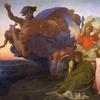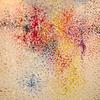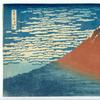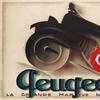'The Teddy Bear Project' Takes Over at the New Museum
- NEW YORK, New York
- /
- September 01, 2016
Through Sept. 25, the New Museum in New York is showing The Keeper, an exhibition dedicated to the act of preserving and collecting objects, artworks, and images. A reflection on the impulse to save both the most precious and the apparently valueless, the exhibition brings together a variety of imaginary museums, personal collections, and unusual assemblages, revealing the devotion with which artists, collectors, scholars, and hoarders have created sanctuaries for endangered images and artifacts. In surveying varied techniques of display, the exhibition also reflects on the function and responsibility of museums within multiple economies of desire.
The centerpiece of this exhibition is Partners (The Teddy Bear Project) (2002), a vast display conceived by Ydessa Hendeles. Composed of over 3,000 family-album photographs of people posing with teddy bears, and vitrines containing antique teddy bears, Hendeles’s project establishes the teddy bear as a metaphor for the consolatory power of artworks and images, and underscores the symbiotic relationship that ties people to their objects of affection.
Through a series of studies and portraits that spans the twentieth century, The Keeper tells the stories of various individuals through the objects they chose to safeguard, exposing the diverse motivations that inspired them to endow both great and mundane things with exceptional significance. As responses to loss, chronicles of experience, subjective quests, and archives for the future, the unusual collections and personal museums presented range from staggeringly maximalist efforts to modest struggles charged with urgency.
Some, such as Roger Caillois’s collection of rare stones or Harry Smith’s string figures, pursue a universal syntax. Other collections were not so much kept as withheld, such as Hilma af Klint’s suite of abstract paintings, which she kept hidden for decades after her death, venturing that they would be better appreciated beyond her own time. Shinro Ohtake’s feverishly collaged scrapbooks burst with found materials as free associations of images and everyday ephemera. In a ceremonious personal custom, Ye Jinglu had a studio portrait taken every year for decades. These photographs, preserved by Tong Bingxue, represent collecting as a mode of auto-ethnography that inadvertently also traces social and political changes over time.
As a visual anthology of cut and pasted images, Henrik Olesen’s Some Gay-Lesbian Artists and/or Artists relevant to Homo-Social Culture Born between c. 1300–1870 (2007) mounts a provocative counter-narrative to the art historical canon by highlighting artists’ censored biographies as well as homoerotic depictions dating from the fourteenth to the nineteenth centuries. In a similar attempt to preserve histories that would otherwise be erased, Susan Hiller’s video The Last Silent Movie (2007–08) looks at sound, gathering the voices of speakers of 25 dying or lost languages to offer a meditation on the conditions that have led to their extinction. A selection of ancient artifacts from the National Museum of Beirut, melted together by shell fire during the Lebanese Civil War, speaks to the preservation of objects whose profound transformations make them even more powerful representatives of the past.
Through this collection and others, the exhibition also emphasizes images and objects that testify to historical trauma or dramatic events, representing the act of preserving as a resolution to bear witness and to remember. Clandestine efforts to save or protect, often taken at great risk, attest to an indefatigable faith in the power of images to heal and comfort, and to a desire to honor what survives in spite of the effects of violence or time. As the specter of iconoclasm continues to resurface in current events, The Keeper presents the complex lives of images and objects that have escaped a tragic end alongside the existential adventures of individuals driven by unreasonable acts of iconophilia.
The Keeper is curated by Massimiliano Gioni, Edlis Neeson Artistic Director; Natalie Bell, Assistant Curator; Helga Christoffersen, Assistant Curator; and Margot Norton, Associate Curator.
The exhibition includes projects by: Hilma af Klint; Yuji Agematsu; Korbinian Aigner; Levi Fisher Ames; Ed Atkins; Hannelore Baron; Wilson Bentley; Tong Bingxue / Ye Jinglu; Arthur Bispo do Rosário; Carol Bove / Carlo Scarpa; Roger Caillois; Maurice Chehab; Oliver Croy / Oliver Elser / Peter Fritz; Howard Fried; Olga Fröbe-Kapteyn; Aurélien Froment; Richard Greaves / Mario Del Curto; Ydessa Hendeles; Susan Hiller; MM; Vladimir Nabokov; Shinro Ohtake; Henrik Olesen; Loretta Pettway; Missouri Pettway; Quinnie Pettway; Zofia Rydet; Harry Smith; and Vanda Vieira-Schmidt














100x100_c.jpg)